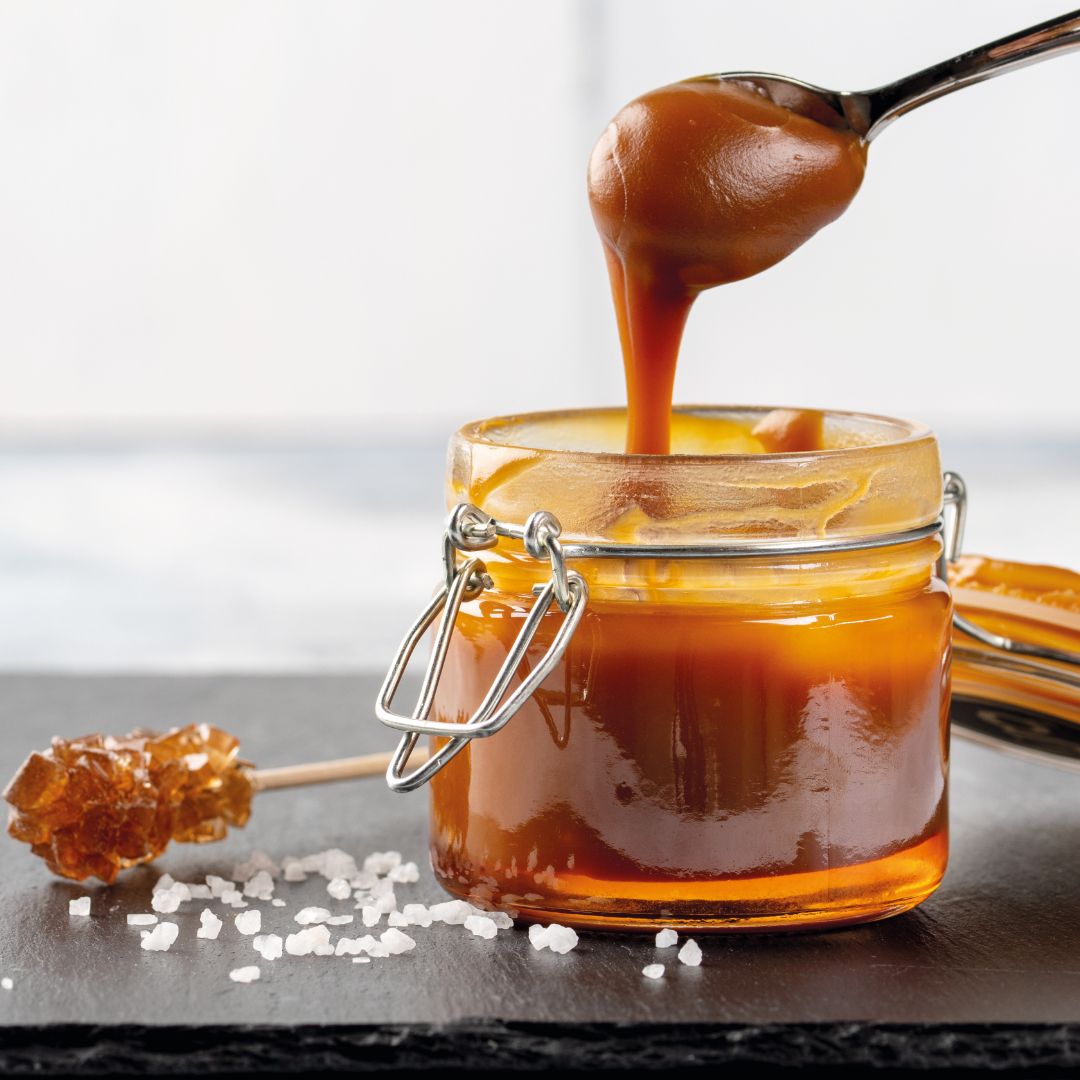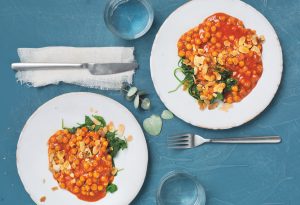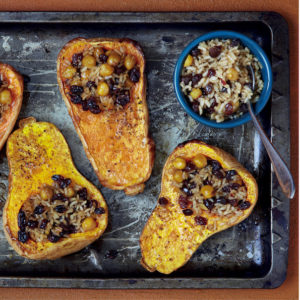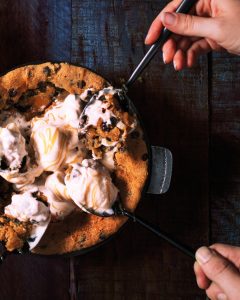Your number-one guide to mastering caramel
With a stigma of being scary and stressful, caramel is actually fairly simple to make when you understand the process. Caramel is simply white sugar that has been melted until it becomes a gorgeous amber-gold liquid. It’s the gateway to all sorts of delicious goodies such as lush caramel sauce, nut brittle and chewy caramel candies.
Safety first
First things first – caramel is viciously hot, about 170°C once it’s golden, which will cause serious burns to the skin. Making caramel shouldn’t be a scary process, but better be safe than sorry by following these precautions:
• Make sure you’re working in a space that is tidy and free of distractions (this includes loud music, excited pets, kids or even clumsy grown-ups!)
• Keep a bowl of ice-cold water nearby, so you can plunge your hand into it if caramel splatters on you.
• Consider wearing a long-sleeved top and have oven mitts on hand to protect yourself against any caramel splatters.
• Do not taste the caramel until it has cooled down completely!
Dry vs wet caramel
There are two basic methods to prepare caramel and in both cases, sugar is liquefied and cooked to a deep golden colour. The darker the colour, the more bitter the caramel will be. Dry caramel simply uses plain white sugar. Once molten, the sugar caramelises almost instantly, so you’ll need to stir it gently to help remelt any clumps that may form as well as keep the colour even throughout. Wet caramel, on the other hand, starts with a mixture of water and sugar that resembles the consistency of wet sand. Because of the water, wet caramel takes longer to reach the caramelisation point, so it develops a deeper flavour compared to dry caramel. This method is recommended for beginners, although you can use whichever method you’re most comfortable with.
Keep it flowing
Due to the additional water, wet caramel is prone to crystallisation. This occurs fairly early in the process where the sugar clumps together into unsalvageable hard, sugary lumps instead of staying liquid. This can occur if the mixture boils before all the sugar has dissolved, as a result of excessive stirring or rotten luck. Our number-one trick to prevent crystallisation is to keep the pot covered with a lid while the sugar dissolves into the water. You can remove the lid once everything is dissolved. A bit of liquid glucose or a drop of lemon juice can also help to prevent crystallisation.
Squeaky clean
Caramel dishes are surprisingly easy to clean up. Fill your pot with water, cover and bring to a boil – the water will dissolve everything! You may need to put in some more elbow grease if your sugar has crystallised.
Easy nut brittle
Delicious as is or to decorate your bakes, nut brittle is best used straight away as the caramel will become sticky over time. Place 100 g roasted nuts on a lined baking tray. In a pot, cook 100 g sugar and 3 tbsp water, covered and without stirring, until the sugar has dissolved. Remove the lid and cook until the syrup is a deep amber colour. Carefully pour the caramel over the nuts. Allow to cool, then snap into shards. Store in an airtight container.
Salted caramel sauce
Place 1 cup sugar in a large pan and cook until dark amber, stirring occasionally to melt any clumps and to keep the caramelisation even. Slowly whisk in ½ cup warm cream in dribbles – the mixture will steam up and bubble furiously so be careful. Cook the sauce for 3 minutes, then whisk in 4 tbsp butter and salt to taste. Pour the sauce into a jar to cool before using.
Caramel apples
Prepare a caramel sauce using 2 cups sugar and 2 cups cream. Cook the mixture, whisking, to 118°C. The caramel should form a firm ball if dripped into a bowl of cold water. Pour the sauce into a heatproof jug and allow to cool slightly. Push popsicle sticks into cold Tru-Cape apples and dunk into the warm caramel. For extra fun, roll in cereal, nuts, crushed cookies or sprinkles!
Words by Kirsty Buchannan
Photography: Getty Images
Want to cook a curry at home, but don’t know where to start? Here’s our guide to essential curry spices that will help you understand how the flavours work.




